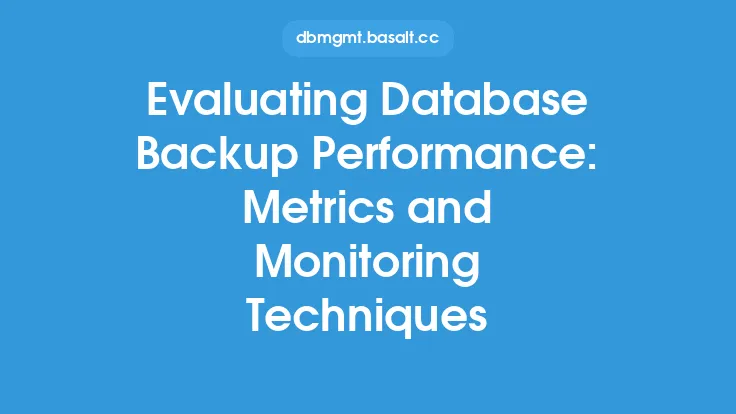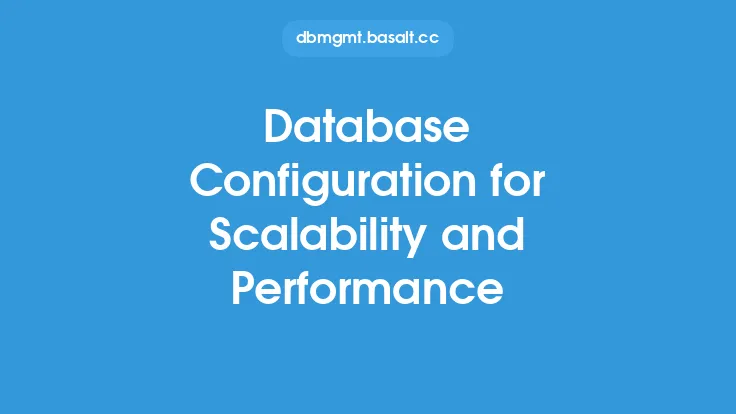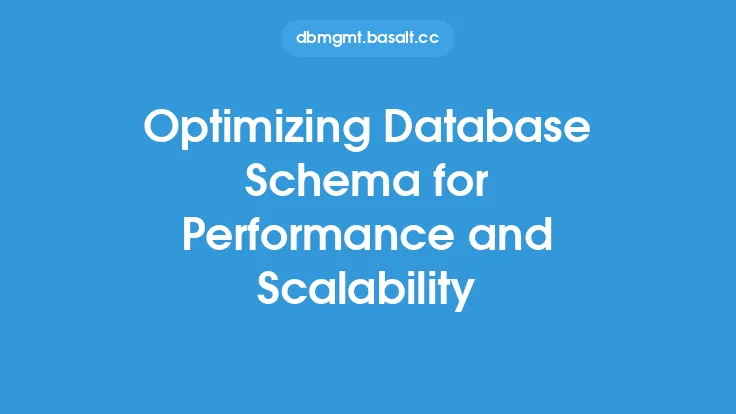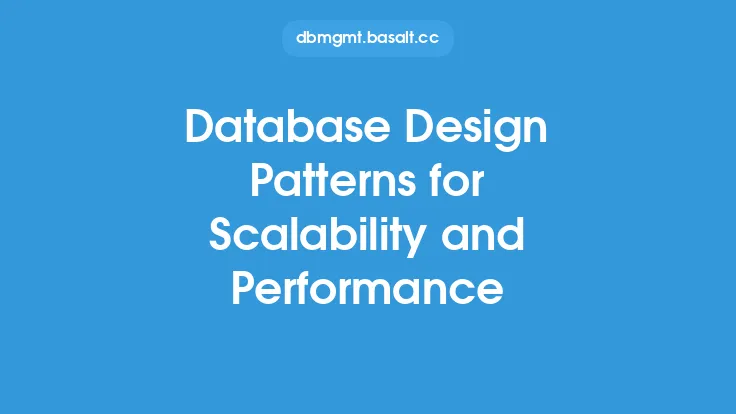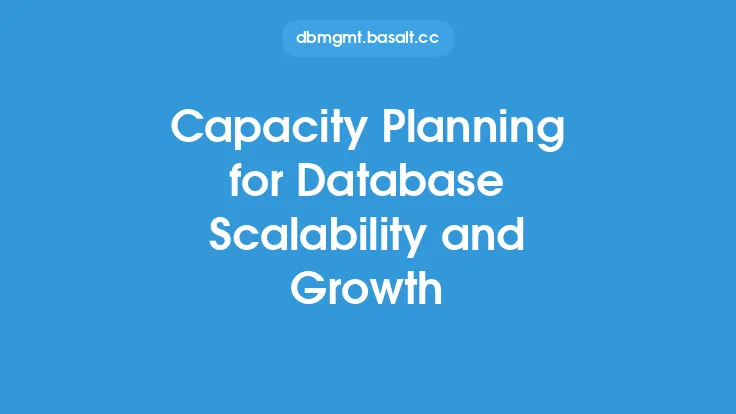When it comes to evaluating the scalability of a database, there are several key performance metrics that must be considered. These metrics provide valuable insights into the database's ability to handle increased workload, data growth, and user demand, and are essential for identifying potential bottlenecks and areas for optimization. In this article, we will delve into the most important performance metrics for evaluating database scalability, and explore how they can be used to ensure optimal database performance.
Introduction to Database Scalability Metrics
Database scalability metrics are used to measure the performance and efficiency of a database as it handles increasing amounts of data, traffic, and user activity. These metrics can be broadly categorized into several key areas, including query performance, data storage and retrieval, concurrency and throughput, and system resource utilization. By monitoring and analyzing these metrics, database administrators and developers can identify potential scalability issues and take proactive steps to optimize database performance.
Query Performance Metrics
Query performance is a critical aspect of database scalability, as it directly impacts the user experience and overall system efficiency. Key query performance metrics include:
- Query execution time: The time it takes for the database to execute a query, including parsing, optimization, and execution.
- Query throughput: The number of queries that can be executed per unit of time, typically measured in queries per second (QPS).
- Query latency: The time it takes for the database to return the results of a query, including network latency and other overhead.
- Cache hit ratio: The percentage of queries that are satisfied by the database cache, rather than requiring a disk access.
Data Storage and Retrieval Metrics
Data storage and retrieval are critical components of database scalability, as they directly impact the system's ability to handle increasing amounts of data. Key data storage and retrieval metrics include:
- Storage capacity: The total amount of data that can be stored in the database, including data files, indexes, and other overhead.
- Storage utilization: The percentage of available storage capacity that is currently in use.
- Data retrieval time: The time it takes for the database to retrieve data from storage, including disk access and other overhead.
- Index usage: The percentage of queries that use indexes to improve query performance.
Concurrency and Throughput Metrics
Concurrency and throughput are essential metrics for evaluating database scalability, as they directly impact the system's ability to handle multiple users and requests. Key concurrency and throughput metrics include:
- Concurrent connections: The number of simultaneous connections to the database, including user sessions and other activity.
- Transactions per second (TPS): The number of transactions that can be processed per unit of time, including commits, rollbacks, and other activity.
- Requests per second (RPS): The number of requests that can be processed per unit of time, including queries, updates, and other activity.
- Lock contention: The percentage of time that the database spends waiting for locks to be released, rather than executing queries.
System Resource Utilization Metrics
System resource utilization is a critical aspect of database scalability, as it directly impacts the system's ability to handle increasing workload and user demand. Key system resource utilization metrics include:
- CPU utilization: The percentage of available CPU capacity that is currently in use.
- Memory utilization: The percentage of available memory capacity that is currently in use.
- Disk utilization: The percentage of available disk capacity that is currently in use.
- Network utilization: The percentage of available network capacity that is currently in use.
Monitoring and Analyzing Performance Metrics
Monitoring and analyzing performance metrics is essential for evaluating database scalability and identifying potential bottlenecks and areas for optimization. This can be done using a variety of tools and techniques, including:
- Database management system (DBMS) built-in monitoring tools, such as Oracle Enterprise Manager or Microsoft SQL Server Management Studio.
- Third-party monitoring tools, such as Nagios or Prometheus.
- Custom scripts and queries, using languages such as SQL or Python.
- Cloud-based monitoring services, such as Amazon CloudWatch or Google Cloud Monitoring.
Optimizing Database Performance
Once performance metrics have been monitored and analyzed, the next step is to optimize database performance to improve scalability and efficiency. This can be done using a variety of techniques, including:
- Indexing and caching: Creating indexes and caching frequently accessed data to improve query performance.
- Query optimization: Rewriting queries to improve execution time and reduce resource utilization.
- Partitioning and sharding: Dividing large datasets into smaller, more manageable pieces to improve data retrieval and storage.
- Load balancing and connection pooling: Distributing workload across multiple servers and connections to improve concurrency and throughput.
- Hardware upgrades: Upgrading server hardware, such as CPU, memory, and disk, to improve system resource utilization and overall performance.
Best Practices for Evaluating Database Scalability
Evaluating database scalability requires a thorough understanding of performance metrics and how they impact system efficiency and user experience. Best practices for evaluating database scalability include:
- Monitoring performance metrics regularly, using a combination of built-in and third-party tools.
- Analyzing performance metrics to identify potential bottlenecks and areas for optimization.
- Optimizing database performance using a variety of techniques, including indexing, caching, query optimization, and hardware upgrades.
- Testing and validating database scalability, using techniques such as load testing and stress testing.
- Continuously monitoring and evaluating database scalability, to ensure optimal performance and efficiency as workload and user demand increase.
